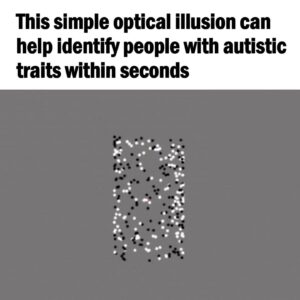
In recent years, academics have investigated many approaches to better understanding and diagnosing Autism Spectrum Disorder (ASD). One such initiative is a unique visual illusion with the potential to shed light on the cognitive abnormalities associated with ASD. Scientists expect that by studying how people perceive the mobility of black and white dots, they can obtain insight into the detail-oriented thinking style that is common in people with autism.
Understanding Autism Spectrum Disorders (ASD)
ASD is a neurodevelopmental disease marked by impaired social communication and interaction, as well as confined and repetitive patterns of behavior, interests, or activities. Common ASD symptoms include difficulty socializing, restricted interests, repetitive activities, sensory sensitivity, and communication and language issues. (2)
ASD symptoms often show in the first two years of life, but some children may not be diagnosed with autism until later. According to the Centers for Disease Control and Prevention (CDC), approximately one in every 36 children in the United States will have been diagnosed with ASD by 2020. There are numerous features connected with Autism; however, having some of these traits does not guarantee that one has the illness. However, understanding the qualities can lead to early diagnosis and, as a result, improved patient treatment and outcomes.




